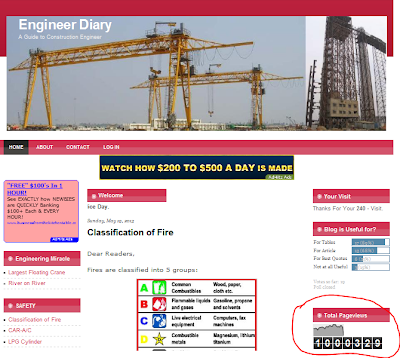Dear Readers,
Now you may well aware about to calculate the weights of steel structures. During construction activities you want to calculate the weights of steel members you will do it absolutely. However if the material is other than steel?It is very simple, formula is same but the specific weight (kg/Cum) is varies.
Example below illustrate to calculate plate size is 1500 X 1500 X 6 with different material (Iron & Copper)
For Steel ( 7850kg/Cum or 7.85kg/sqm)
= (1.5 X 1.5 X 6 X 7.85)
= 105.975 kg
For Copper Plate same size (8930kg/Cum or 8.93Kg/sqm)
= (1.5 X 1.5 X 6 X 8.93)
= 120.555 kg
For Unit Weight of more metals listed below table
Hope above table would be more useful for Construction Engineers. If any queries please send your queries through contact form or send a mail to engineerdiary@gmail.com
For More Details about Steel Weight Calculation click Here
For More Details about Other Material Weight click Here
For More Details about Unit Weight of Building Materials click BM
For More Details about Dead Weight of Construction Materials click CM
Best Quote: No one
has travelled the road of success without
crossing streets of failure. Have A Nice Day



















.jpg)


.jpg)













